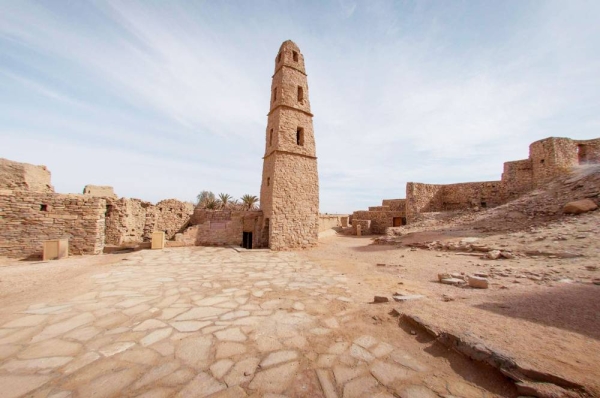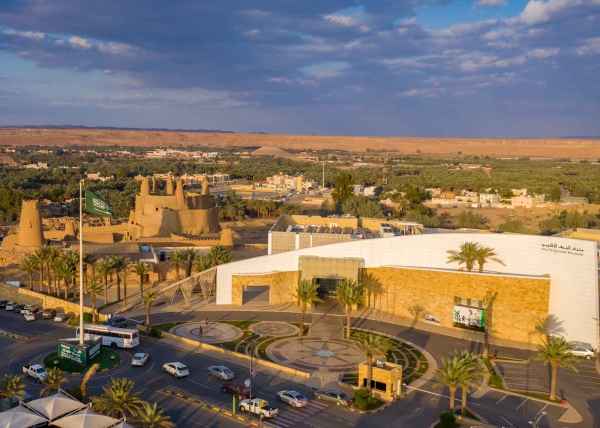


The Oasis of Dawmat al-Jandal is one of the archaeological and historical sites, and the most prominent place in Dawmat al-Jandal in al-Jawf, northwest of the Kingdom of Saudi Arabia. It was listed in ISESCO’s Islamic World Heritage List in 2020.
Heritage Contents of the Oasis
The Oasis of Dawmat al-Jandal includes the most significant historical landmarks in al-Jawf, such as Marid Castle, Omar Bin al-Khattab Mosque, al-Dara’ district, the historical market of Dawmat al-Jandal, and al-Jawf Regional Museum.
The Most Significant Landmarks of the Oasis
Marid Castle is the most prominent landmark in the Oasis of Dawmat al-Jandal. This castle was mentioned when the forces of Zenobia, the Queen of Palmyra, tried to break into the castle but didn’t manage to do so. Queen Zenobia then said her famous quote “Marid has rebelled, and Ablaq has glorified”. Marid Castle is located on a high hill south of the old town of Dawmat al-Jandal, and is surrounded by a wall with 4 observation towers. Inside the castle, there are a number of rooms and a deep well. Some parts of the castle were rebuilt, whereas the major part remained the same. The excavations at the lower part of the castle, which were conducted in 1976, revealed Nabataean and Roman artifacts dating back to between the 1st and 4th centuries BC.
Another significant landmark in the Oasis of Dawmat al-Jandal is Omar Bin al-Khattab Mosque in the south of al-Dara’ district. This mosque is one of the most important historic mosques in the Kingdom of Saudi Arabia, as it is a great model of the first mosques in Islam such as the Prophet's Mosque. It was built through the order of the Caliph Omar Bin al-Khattab in 637 when he was heading to Jerusalem. The minaret in the southwest of the mosque is about 12.7 m high. Omar Bin al-Khattab Mosque is of great historic importance because its design and architectural style are well-preserved.
Historical Background of the Oasis’ Landmarks
Buildings in al-Dara’ district date back to the Medieval Islamic Era, but the archaeological layers which were built over them date back to the 1st century BC. This district includes terraced stone houses, and alleys some of which are arched-roofed. Some of the district’s houses are of 2 stories with roofs made of tamarisk wood and palm fronds. Those buildings are surrounded by orchards, trees, and water streams which used to provide the residents with nearby spring water.
Related quizzes
Related articles
